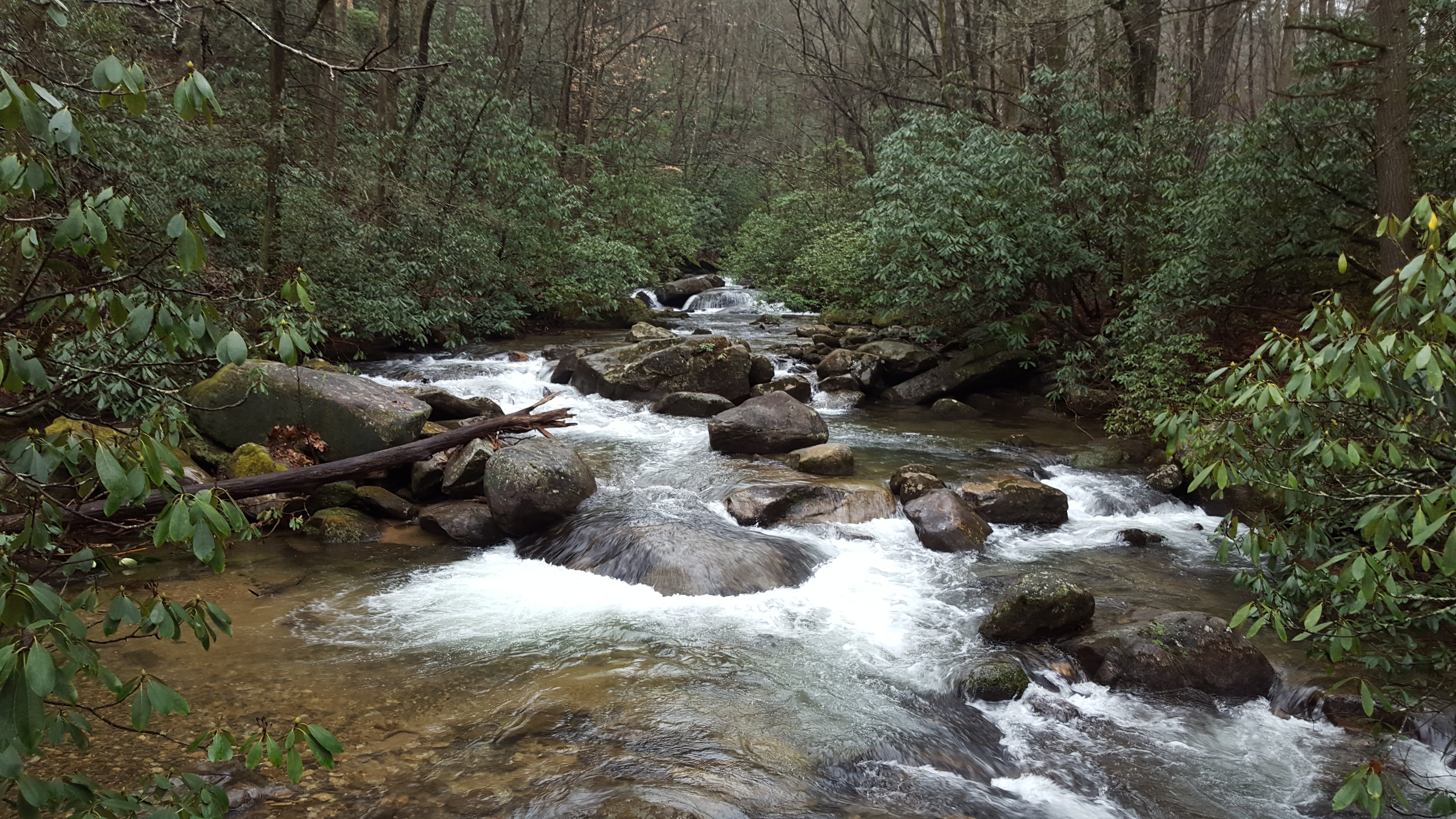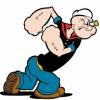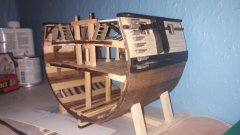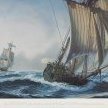-
Posts
9,928 -
Joined
-
Last visited
Reputation Activity
-
 ccoyle got a reaction from popeye the sailor in USS Essex by RGL - FINISHED - Trumpeter - 1/350 - PLASTIC - as she appeared in February 1944
ccoyle got a reaction from popeye the sailor in USS Essex by RGL - FINISHED - Trumpeter - 1/350 - PLASTIC - as she appeared in February 1944
Congraulations on another outstanding model!
-
 ccoyle reacted to RGL in USS Essex by RGL - FINISHED - Trumpeter - 1/350 - PLASTIC - as she appeared in February 1944
ccoyle reacted to RGL in USS Essex by RGL - FINISHED - Trumpeter - 1/350 - PLASTIC - as she appeared in February 1944
Aaaaaand parked in the digital graveyard with the others, that’s 3 of 3 for the USA, along with Germany, Japan.
-
 ccoyle got a reaction from Edwardkenway in Zulu by Javier Baron - FINISHED - Scottish herring lugger
ccoyle got a reaction from Edwardkenway in Zulu by Javier Baron - FINISHED - Scottish herring lugger
Fabulous! The world's smallcraft offer a virtually inexhaustible supply of modeling options. I look forward to seeing you work your magic!
-
 ccoyle got a reaction from popeye the sailor in Calypso by Luekutus - Billing Boats
ccoyle got a reaction from popeye the sailor in Calypso by Luekutus - Billing Boats
I loved the old Jacques Cousteau documentaries back in the day, too. I also built the old Revell kit of Cousteau's PBY Catalina.
-
 ccoyle reacted to prototypep3 in HM Cutter Alert by prototypep3 - Vanguard Models - 1/64th scale
ccoyle reacted to prototypep3 in HM Cutter Alert by prototypep3 - Vanguard Models - 1/64th scale
Hi all, so starting off the build I'd like to say this is my very first build to go with. Some of you may have read my introduction post in the new members section and I said I had chosen a mamoli kit, well the kit was incomplete and was sent back. Long story short I saw James H's review of the alert kit and his statement about if you had a bit of an engineers mind it's not a bad first kit. And so here we are, any suggestions or tips are most welcome along the way as well as corrections on incorrect terminology.
To start things off I did a complete inventory, numbered all the parts and started dry fitting the bulkheads to the false keel. (and no my kitchen bench is not my final workspace, this was done late at night and I was a tad over excited to start)
-
 ccoyle got a reaction from FriedClams in Zulu by Javier Baron - FINISHED - Scottish herring lugger
ccoyle got a reaction from FriedClams in Zulu by Javier Baron - FINISHED - Scottish herring lugger
Fabulous! The world's smallcraft offer a virtually inexhaustible supply of modeling options. I look forward to seeing you work your magic!
-
 ccoyle got a reaction from JerseyCity Frankie in advice on setting kit price
ccoyle got a reaction from JerseyCity Frankie in advice on setting kit price
True, it might be locally very popular, and that should be factored into the asking price. By "not a particularly popular subject" I was thinking more about shallow-draft Dutch yachts compared to, say, three-masted men-of-war with lots of guns. 😉
-
 ccoyle reacted to Javier Baron in Zulu by Javier Baron - FINISHED - Scottish herring lugger
ccoyle reacted to Javier Baron in Zulu by Javier Baron - FINISHED - Scottish herring lugger
My current project is a lugger of the east coast of Scotland, a type of ship called Zulu, which was the most powerful and efficient sailboat for the herring sail fishery among those of its size in the British Isles.
Its origin dates back to 1879, the year in which a Lossiemouth fisherman, William "Dad" Campbell, devised a radical design for his new boat for the capture of herring. He had the vertical bow of the fifie and the sloping stern of the skafie, and called this ship "Nonesuch." It was relatively small, with 16 m. of length and a keel length of 12 meters.
This design, which provided a longer deck and a shorter keel, markedly improved the maneuverability of the boat and provided it with a good speed, characteristics that made it highly appreciated by herring fishing fleets, as they managed to reach promptly to the fishing grounds and return quickly with the catch. Due to these qualities, that type of vessel quickly became very popular throughout the Scottish east coast.
The new type of vessel was baptized as a Zulu because of the war that was developing in South Africa at that time, in which Scottish soldiers fought, a war that was rejected by the population who thought they were fighting in an English conflict that, deep down, they were not concerned, which made their sympathies lean towards the Zulus.
The Zulu ships were carvel built, instead of clinker built, which was the most common in those waters. They were provided with two masts carrying lug sails and a bow jib. The sails were heavy and difficult to maneuver, and the masts to carry them had to be very long and strong. In the Zulu of greater size, the masts came to be 18 m high in boats of 24 m in length. As the twentieth century approached, steam winches were introduced aboard, which made maneuvering sails and nets much easier for crews.
However, and despite the success of its design, the life of the Zulu was quite short, since it was replaced by steam fisherboats after a brief existence of just over three decades.
-
 ccoyle got a reaction from mtaylor in HMS Victory by helge - Caldercraft - 1:72
ccoyle got a reaction from mtaylor in HMS Victory by helge - Caldercraft - 1:72
Welcome aboard!
Oak is really not a first-choice wood for deck planking, or any planking for that matter. The grain is just far too open. I don't know what is provided in the kit, but holly is a good and inexpensive option for decking, which should be fairly light in color.
-
 ccoyle reacted to Chariots of Fire in Bluenose by Chariots of Fire - FINISHED - Billing Boats - 1/100
ccoyle reacted to Chariots of Fire in Bluenose by Chariots of Fire - FINISHED - Billing Boats - 1/100
Last summer I got a Billings 100 scale kit of the Bluenose. My wife expressed an interest in having a model of a schooner so we did some on-line shopping and ordered the kit. It took some time but finally came last June. Laser cut parts were excellent and easy to remove from the wood. Plastic parts remind me of car kits of the '60's. So much more detail in today's extrusions. Nevertheless I used most of them. Planking the hull was a lengthy process as it is impossible to pin the wood to the bulkheads without pre-drilling the holes. Not being an expert at this kind of building I followed the general method of planking the hull but with the pieces being so small (1/8" x 1/16" roughly) it was difficult to taper them. So in some areas a separate filler piece was shaped and inserted. Then as the hull was sanded smooth I used ACC in some of the gaps and let the sanding dust fill them in. It worked quite well.
The kit instructions were less than desirable. Numbers in some of the drawings indicated what some of the standing and running rigging were but there were no corresponding numbers for some lines in other views making it difficult to determine where the lines should go. But with some on-line investigation Most of the work was able to get done.
We decided that the sails would be furled. Kit material was way to heavy and thick for the scale of the model unless it was to be built in full sail. Even then, doing the necessary folding of the edges, etc would have been very burdensome and time consuming. Probably not the way most furled sails would be done but the effect was good for this build was to use single ply facial tissue. I superglued the edges of the material sufficient to allow a pin hole to be punched through about every half inch for tying the sails to the booms. For the jib sails, I made small brass wire loops, ran them through the holes and closed them up. Thread was then run through each loop. This allowed the sail to be bunched up in front. The rest was tied off.
Here are a couple of photos of the work in progress and the final result which we are generally pleased with.
The deck pieces were also laser cut but had no lines for planking. I drew lines with a fine drawing pen and then coated the deck with clear polyethylene.
I made a jig out of sheet plastic and cut two holes the size of the deadeyes. In between I cut a slot. The deadeyes were put in the holes with the pre-drilled thread holes aligned and then threaded them. Using a jig assured that all of them would be the same. Two jigs were made because the deadeyes were of two sizes. The shrouds were put in place first and ratlines were individually tied with clove hitches and secured with ACC. Then the ends were cut off. In the photo above the booms were raised but were lowered in the final build with furled sails.
I'm sure there is plenty to pick apart by those of you who are a lot more expert at model boat building than I am. So go easy on the criticism, although it will be graciously accepted.
Here's a 1/25 scale model of a piece of fire apparatus that is more my type of building. It is a combination of sheet plastic, sheet brass, resin castings and is scratch built except for the tires and wheels. It represents a 1954 Maxim 750 gpm pumper. The real one is still around and was photographed and measured for the build.
-
 ccoyle got a reaction from lmagna in Calypso by Luekutus - Billing Boats
ccoyle got a reaction from lmagna in Calypso by Luekutus - Billing Boats
I loved the old Jacques Cousteau documentaries back in the day, too. I also built the old Revell kit of Cousteau's PBY Catalina.
-
 ccoyle reacted to TheAuthorsDaughter in Respect time and detail
ccoyle reacted to TheAuthorsDaughter in Respect time and detail
Stumbled upon this group and appreciate the amount of detail and accuracy that you all so carefully try to follow. My name is Arina and I am one of Michael Mjelde’s daughters and while doing some research for him on Glory found myself scrolling thru and enjoying the photos of everyone’s work!
-
 ccoyle reacted to TheAuthorsDaughter in Glory of The Seas
ccoyle reacted to TheAuthorsDaughter in Glory of The Seas
Chris,
Depends on how accurate model is and which year it’s depicting as she underwent numerous reconfigurations over her life time. William Joseph built a model that was on display in California that was very accurate as he had sailed on her ( The JFK Library model is not as accurate).The bells (two) would’ve been mounted forward and aft. First one would’ve been forward of forward mast aft of focsle head. Other was mounted aft. If you contact Michael Mjelde in Bremerton, WA, he is always glad to answer any questions about her.
Regards,
Arina (Literally the authors daughter, Mike is my dad)
-
 ccoyle reacted to Chris C in Glory of The Seas
ccoyle reacted to Chris C in Glory of The Seas
I’m restoring a large handmade replica of The Glory of The Seas clipper ship. I found it in an antique story in really really rough shape. The tag with it said it was crafted circa 1940. This ship launched from East Boston in 1869, same year as The Cutty Sark and built by Donald Mc Kay who built The Flying Cloud. I’ve built plenty of boat models over the years, nothing with this much detail and rigging. I’m making progress and have some resources for info on clipper ship rigging. One thing I have not found is where the ships bell would have been mounted. Can anyone answer this question ? TY
chris
-
 ccoyle reacted to helge in HMS Victory by helge - Caldercraft - 1:72
ccoyle reacted to helge in HMS Victory by helge - Caldercraft - 1:72
Hello all builders I am new on this forum and my building experience is not so good,but I can make some with my hands,så I tied the difficult one, (Vctory). I have build some models before. I am sorry for my bad inglish. I have some quoestion acording to deckplanking. Has some one used oak strips for deck planking. I have some 1x5mm oak I want to use for my build,and I dont know if this is a little to vide for the 1:72 scale victory,and the suported planks is 1x4,maybe the 1x5 oak will be a little big for this scale,anny coments is welcome. PS. the oak strip to the right I have rub inn a little charcoal and then sanded gently and warnished it.
have a nice evening all,Helge
-
 ccoyle reacted to Luekutus in Calypso by Luekutus - Billing Boats
ccoyle reacted to Luekutus in Calypso by Luekutus - Billing Boats
I joined Model Ship World shortly after ordering the OcCre's HMS Beagle thinking that would be my first model. A few days after that, however, a family member asked, "Why did you order the Beagle when you've had that [unbuilt] Calypso model on your shelf for twenty-plus years?" I decided they were right, so I put the Beagle on my shelf to wait its turn and started to work, at long last, on the Billings' Calypso model that I've had so long I can't even remember when I bought it.
So this is my first build log.
First off, I should say the the Calypso was designed to be an RC model, but that I'm not going that route. I'm building this for a static display (I loved Jacques Cousteau as kid) in my office. I've already kind of "gone off the reservation" with the kit, deciding that I wanted to plank the hull of the model to better represent what was in reality a wooden ship.
— John
-
 ccoyle reacted to tkay11 in HM Cutter Sherbourne by Oddball - Caldercraft - 1:64
ccoyle reacted to tkay11 in HM Cutter Sherbourne by Oddball - Caldercraft - 1:64
I don't really understand your question about the first plank that goes against the bulwark, but there isn't a plank that goes all the way from bow to stern. Hull planks were generally 20-24ft long (@1/64 = 4.5" or 114mm). The Sherbourne was 54'6" long, so would have 2-3 planks per strake.
Planks are indeed curved at the bow and the stern, and Chuck's planking videos demonstrate how to do this using heat alone. Normally (as you'll also see in the various planking tutorials) you have to calculate the width of the planks at each bulkhead, either using a fan of lines (the easiest) or by arithmetic.
It would be very difficult just to use the full width of the plank and adjust the width as you go. One immediate problem would be how you would work out how to shape the first plank you laid. You would then get into real difficulties as the number of strakes increases, unless, of course, you don't mind your planking to look a real mess which you would hope to cover up with paint.
As you will have seen from the videos, the easier way is to start by working out in advance how many strakes of planking you will need for the hull. At its very simplest, this is done by measuring the distance between the top of the largest (midpoint) bulkhead (at the position of the first strake) and the keel using a piece of string or thread along its curve. You then take the width of the planks you have (I think the kit ones are 5mm) and divide that into the length you have found. So if the length of the bulkhead is 100mm, that divided by 5 would give you 20 strakes. So you now aim to have 20 strakes at the bow and 20 at the stern. This may be impossible as you can't have planks that are too narrow at their ends, so this is one reason why you may be forced to add a stealer.
The determination of the number of strakes allows you to take each bulkhead and divide its curve length by 20, and mark off each width accordingly with a pencil on the bulkhead. Most people divide the hull into bands, and plank each band in turn to help avoid problems of 'cutting creep'. You also have to take into account that the garboard plank will be wider than the others.
It may be a good idea to look at the printed guides to planking provided in the resource centre on this site, in addition to the videos, as that may allow you to absorb more fully the various ways in which planking can be approached.
I hope this helps and that I haven't muddled things even further!
Tony
-
 ccoyle reacted to juansystem05 in SWIFT 1805 by juansystem05 - Artesania Latina - Scale 1:50 - First wooden ship build
ccoyle reacted to juansystem05 in SWIFT 1805 by juansystem05 - Artesania Latina - Scale 1:50 - First wooden ship build
thank you chris didnt know about the decoloration of decks due to weather.
nice! will have a look at them! and see which one I like the most
-
 ccoyle reacted to RGL in USS Essex by RGL - FINISHED - Trumpeter - 1/350 - PLASTIC - as she appeared in February 1944
ccoyle reacted to RGL in USS Essex by RGL - FINISHED - Trumpeter - 1/350 - PLASTIC - as she appeared in February 1944
The air wing in construction
-
 ccoyle reacted to RGL in USS Essex by RGL - FINISHED - Trumpeter - 1/350 - PLASTIC - as she appeared in February 1944
ccoyle reacted to RGL in USS Essex by RGL - FINISHED - Trumpeter - 1/350 - PLASTIC - as she appeared in February 1944
You can hardly see this, but when the carriers did recovery operations, they put up wire barriers to stop planes that missed the arrestor cable, so the upgrade provided the 8 required stays which I have rigged with two wires each, just near impossible to see.
-
 ccoyle reacted to RGL in USS Essex by RGL - FINISHED - Trumpeter - 1/350 - PLASTIC - as she appeared in February 1944
ccoyle reacted to RGL in USS Essex by RGL - FINISHED - Trumpeter - 1/350 - PLASTIC - as she appeared in February 1944
Pretty much done, just have to add some crash barriers after I do the planes.
-
 ccoyle reacted to yvesvidal in B-25 Mitchell "Meet Miss Runyon" by Javlin-HK-1/32
ccoyle reacted to yvesvidal in B-25 Mitchell "Meet Miss Runyon" by Javlin-HK-1/32
Beautiful cockpit. It helps to work at 1/32nd or 1/48th scale..... I cannot stand the 1/144th of my Space Discovery interiors.
Yves
-
 ccoyle reacted to wtimlen in Yankee Hero 1899 by wtimlen - FINISHED - BlueJacket Shipcrafters - Scale 3/8
ccoyle reacted to wtimlen in Yankee Hero 1899 by wtimlen - FINISHED - BlueJacket Shipcrafters - Scale 3/8
This will be my first solid hull build, and my first Blue Jacket Kit. My last build was a Midwest Boothsbay Lobster boat R/C. Looking forward to the experience of building the kit and posting the build. More posts/pictures to come, this was first just wanted to see if I got right.
-
 ccoyle reacted to mog in PT 105 by mog - FINISHED - Dumas - 1:30 scale
ccoyle reacted to mog in PT 105 by mog - FINISHED - Dumas - 1:30 scale
Engine hatch cowl vents, very small detail pieces made from brass strip, brass tube, brass nails, and washes. The detailing was time consuming and a patience tester, but I think the effect works
-
 ccoyle reacted to Brucealanevans in USF Confederacy by Brucealanevans - FINISHED - Model Shipways - 1:64
ccoyle reacted to Brucealanevans in USF Confederacy by Brucealanevans - FINISHED - Model Shipways - 1:64
Finished the sills and lintels! No real problems. For the sills, I put them in in pairs (port and starboard) and trued them to level with the spacer 3/8" square strips spanning both lintels and clamped to them while the glue set.
I had to adjust the height of the last two uprights to get the cap strip for the quarterdeck lintels to run true so that the ports would be symmetric, especially the upright supporting the "zz"strip which for some reason (operator error I'm sure) came up short.
Next some sanding to fair the new woodwork to the hull exterior, and then on to the uprights.
I have never seen a kit with this degree of excellence in the instructions! Thanks Chuck.
It's starting to look like a ship!






